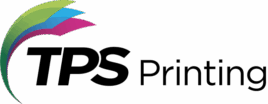What is the difference between vector graphics and bitmap graphics?
A vector graphic is defined in a mathematical nature, which makes it resolution-independent. This means it can be printed clearly at any size. A bitmap image is formed by a rectangular grid of small squares, known as pixels. Each pixel contains data that describes whether it should be rendered as black, white, or a level of color. Bitmap graphics are resolution-dependent and can appear jagged or in loose detail if they are created at a low resolution and then enlarged or printed at a higher resolution.
Where do vector graphics come from?
Vector graphics are typically created by illustration software such as Adobe Illustrator.
Where do bitmap graphics come from?
Bitmap graphics are typically created by pixel-based image editing software such as Adobe Photoshop. Additionally, bitmap graphics are generated from digital cameras and scanners.
Can bitmap graphics be converted to vector graphics, and vice versa?
Yes. Software such as Adobe Illustrator may be able to convert bitmap images to vector images. Vector images can be converted to bitmap images by opening them with Adobe Photoshop. Please note that converting a vector image to a bitmap image is rarely necessary, removes the resolution-independence of vector graphics, and should only be done if you have a very specific reason to convert the graphic.
What are the different types of bitmap graphics?
A one-bit image refers to an image that is a solid color, with no shades of that color. A continuous tone image refers to photographic images, whether they are full color, black-and-white images with shades of gray (grayscale), or single-color images with shades of that color.
What guidelines do you have for bitmap graphics resolution?
One-bit images require 600 pixels per inch (1200 preferred). Full-color continuous tone images, grayscale images, and single-color continuous tone images require 300 pixels per inch.
Can I resize bitmap graphics in a page layout application?
These guidelines are for bitmap images that are used at their actual size. If the image is enlarged in a page layout application, the requirements enlarge by the same amount. For example, enlarging a full-color, continuous tone image 225% in QuarkXpress would require a resolution of 675 pixels per inch (the original requirement of 300 pixels per inch multiplied by the enlargement of 225%). It is best to avoid performing scaling in a page layout application, as these programs have no ability to change the actual pixels in an image.
Can I resize bitmap graphics in Photoshop?
Photoshop can increase the resolution of a low-resolution image. However, increasing the resolution of an image scanned or created at a lower resolution only spreads the original pixel information across a greater number of pixels and rarely improves image quality.
I’ve heard Encapsulated PostScript (EPS) mentioned in the context of both vector graphics and bitmap graphics. How can it be both?
EPS files act as a container for transferring graphic information. When illustration software such as Adobe Illustrator creates an EPS file, it is a vector EPS. When pixel-based image editing software such as Adobe Photoshop creates an EPS file, it is a bitmap EPS.
Can I copy a graphic and paste it into my document?
While copy-and-paste is supported by most software, you will have much more predictable results by creating a link to your graphic. The graphic then remains outside of your document and is referenced as needed. Please refer to your software’s documentation for full details about creating links to your graphics.
